Best Sensory-Friendly Lighting Solutions For Autism
The Importance of Sensory-Friendly Lighting in Autism Care
Sensory processing challenges are a common experience for individuals with autism spectrum disorder (ASD). Sensory-friendly lighting solutions are a crucial element in designing calming, supportive environments — whether at home, therapy centers, or classrooms. This article explores the best lighting options tailored to address sensory sensitivities, improve mood, and enhance behavioral and developmental therapies like Applied Behavior Analysis (ABA). By balancing calming aesthetics with functional design, sensory lighting can significantly aid the success of autism interventions.
Understanding Sensory Rooms: A Sanctuary for Autism Therapy
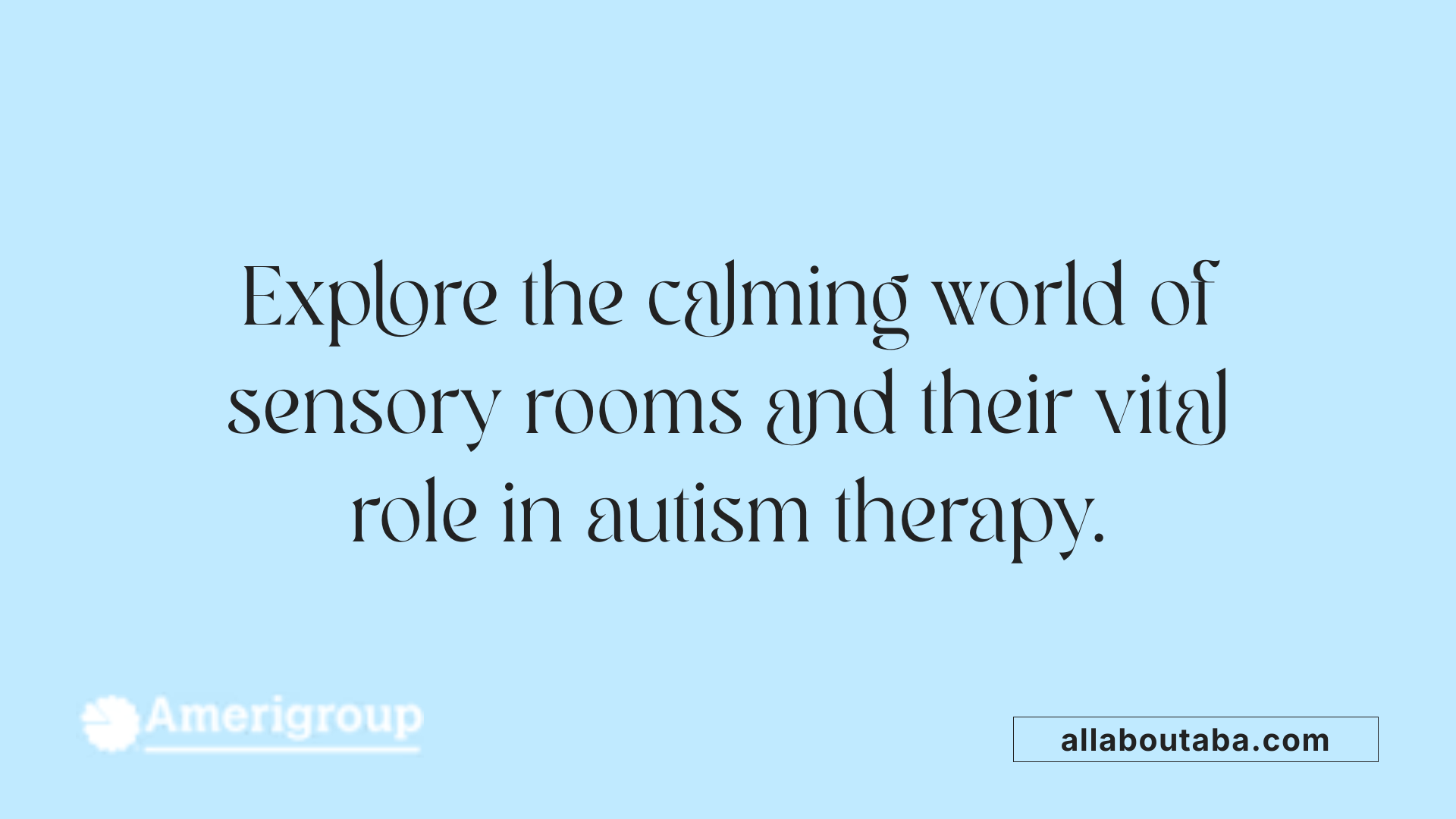
What Are Sensory Rooms and Their Purpose?
Sensory rooms are carefully designed spaces that help individuals, especially those with autism spectrum disorder (ASD), manage sensory processing difficulties. These rooms provide a calming and focused atmosphere where users can find comfort and reduce sensory overload. The main goal of these environments is to stimulate, develop, or balance the sensory system, aiding individuals in coping better with sensory challenges.
What Equipment Is Commonly Found in Sensory Rooms?
Sensory rooms are equipped with a variety of specialized tools that cater to different senses. Some commonly used equipment includes:
- Fiber optic lighting: Provides gentle, colorful light that soothes and engages sight.
- Disco balls and mirror balls: Create reflective and dynamic light effects that can engage visual senses.
- Soothing music: Helps regulate auditory input and calm the mind.
- Tactile walls: Surfaces with different textures for tactile stimulation.
- Water beds and vibrating cushions: Offer gentle movement and vibration to provide calming proprioceptive input.
Lighting features are particularly important, often incorporating bubble tube lamps and LED light strips that provide calming effects. For individuals sensitive to light, specialized lighting that can be adjusted ensures a safe and comfortable environment.
How Do Sensory Rooms Support Autism Care?
In autism therapy, sensory rooms play a vital role by offering a safe space for sensory regulation. These environments help reduce anxiety and stress by fostering calmness and improving focus. Research shows that colors like blue within these spaces can encourage calmness and creativity, while natural and dynamic lighting positively influence mood and learning.
By minimizing sensory overload and providing controlled sensory input, sensory rooms support individuals with ASD in developing better sensory processing capabilities. This makes sensory rooms an essential tool in autism care, helping enhance overall well-being and engagement in therapy.
How Sensory-Friendly Lighting Influences Mood and Learning in ASD

What is the effect of color on mood?
Colors can greatly influence a person's mood, especially in sensory environments designed for individuals with autism spectrum disorder (ASD). For example, blue lighting is often used because it fosters calmness and encourages creativity, helping users feel more relaxed and focused.
How does natural and dynamic lighting impact mood and learning?
Natural lighting has well-documented positive effects, boosting mood, health, and overall attitude. Sensory rooms often incorporate natural light to promote well-being. Additionally, dynamic lighting—lighting that changes in intensity or color—can support learning and engagement by creating stimulating visual experiences without being overwhelming.
What types of calming sensory lights are used in sensory rooms?
Sensory-friendly lighting in these rooms includes bubble tube lamps, reflective balls, LED light strips, mirror balls, and fiber optics. These lights offer soothing visual stimuli that help regulate sensory input. For individuals with light sensitivity, adjustable lights ensure a safe and calming atmosphere tailored to their needs.
Tailored Sensory Lighting for Individuals with Light Sensitivity
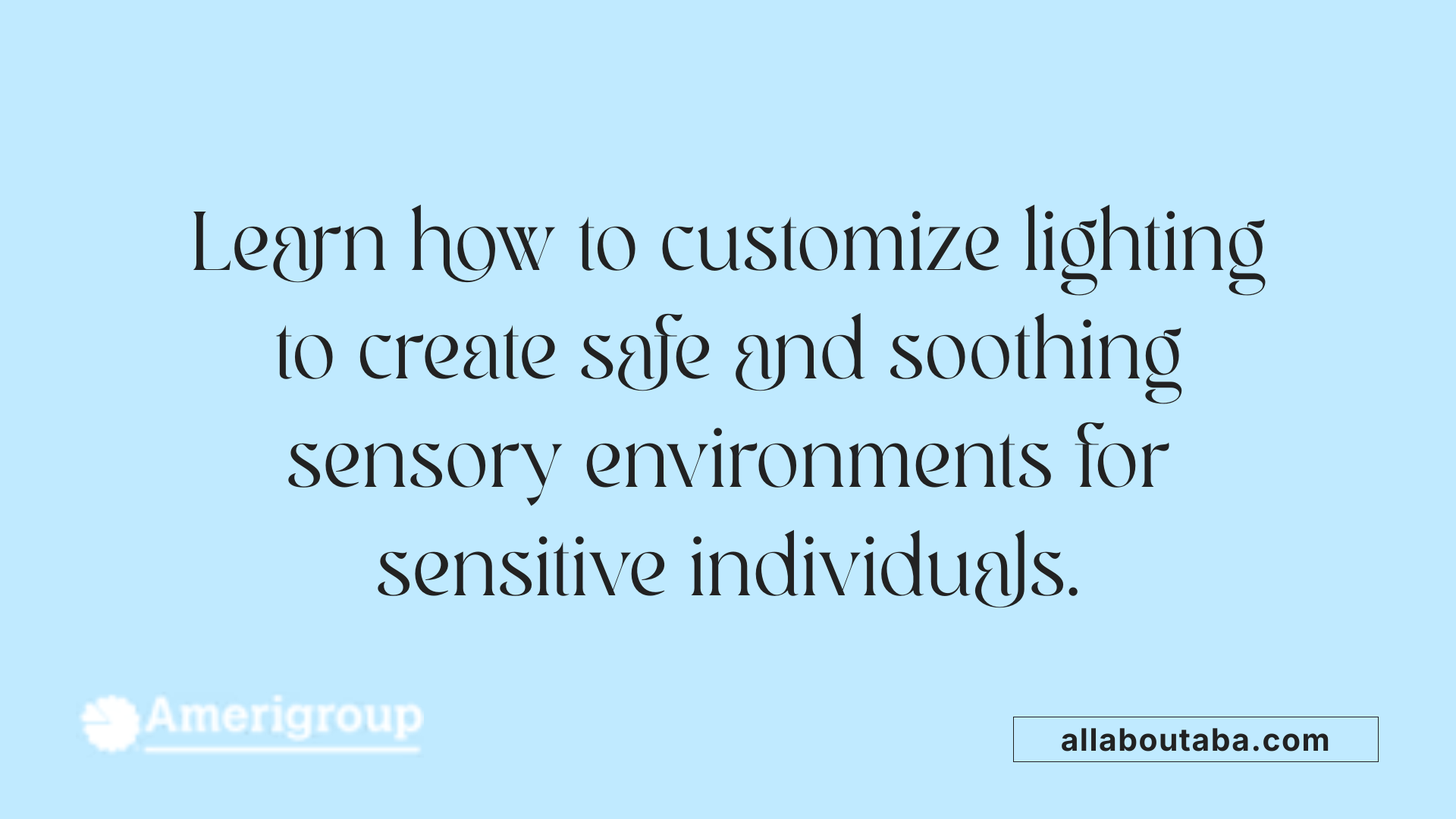
What considerations should be made for light-sensitive individuals?
Individuals with light sensitivity, often found among those with autism spectrum disorder, require special attention when designing sensory rooms. Harsh or overly bright lighting can cause discomfort or distress. Therefore, it is crucial to avoid intense fluorescents and harsh glares that may overwhelm or trigger negative reactions.
What adjustable and safe lighting options exist for sensory rooms?
To accommodate these individuals, sensory rooms utilize a variety of calming sensory lights including bubble tube lamps, reflective balls, LED light strips, mirror balls, and fiber optics. These lighting options can be dimmed or adjusted to reduce intensity and help create a soothing atmosphere. Selecting lights that emit soft, cool colors like blue can further promote calmness and creativity.
How can sensory environments be customized to meet individual needs?
Creating a customizable sensory environment involves providing controls that allow users or caregivers to modify lighting intensity, color, and patterns based on personal comfort levels. Dynamic lighting that can be adjusted easily ensures the environment remains safe and calming, supporting sensory balance without overstimulation. Incorporating natural lighting when possible also improves mood and overall well-being.
This tailored approach enables sensory rooms to serve as safe havens where individuals with light sensitivity feel comfortable and supported, encouraging relaxation and focus.
Integrating Sensory Lighting Within ABA Therapy Programs
What is Applied Behavior Analysis (ABA) therapy?
Applied Behavior Analysis (ABA) therapy is a science-driven method focused on altering behavior by understanding how environmental factors influence actions. Its goal is to enhance positive behaviors such as communication, social interaction, and essential daily skills, while reducing harmful or disruptive behaviors. ABA programs are personalized through detailed assessments and feature clear, measurable goals across various domains. These programs are often guided by board-certified behavior analysts (BCBAs) and include structured approaches like Discrete Trial Training alongside naturalistic strategies such as Pivotal Response Treatment.
How does ABA therapy benefit individuals with autism?
ABA therapy is advantageous for people with autism by nurturing crucial life skills — from language and communication to social and daily living abilities — and by minimizing challenging behaviors. Its evidence-based nature ensures interventions are tailored and effective, resulting in meaningful improvements. Early and intensive ABA can lead to enhanced independence, better social functioning, and sometimes readiness for participation in mainstream environments. The flexibility of ABA allows its practice in multiple settings, including homes, schools, and communities, often with collaboration among trained professionals.
What techniques are used in ABA therapy?
ABA employs a range of proven techniques, such as positive reinforcement to encourage desired behaviors and discrete trial training for teaching specific skills. Other strategies include modeling, prompting and fading prompts gradually, chaining behaviors together, and extinction to reduce unwanted behaviors. Additional tools include visual modeling, behavior contracts, redirection, script fading, and behavior schedules. The ABC framework (Antecedent-Behavior-Consequence) helps identify behavior triggers and outcomes, crafting a comprehensive understanding to guide interventions.
What role do sensory-friendly environments play in ABA therapy?
Sensory-friendly environments, including sensory rooms equipped with specialized lighting and equipment, support ABA therapy by providing calming and adjustable settings for individuals with sensory sensitivities, especially those with autism. Sensory rooms use tools like fiber optic lighting, bubble tube lamps, LED strips, and reflective balls to create an atmosphere that can soothe, focus, and comfort users. These environments accommodate individuals with light sensitivity by employing appropriately designed lighting that is adjustable and non-overwhelming.
Research on lighting reveals that elements like color and natural light influence mood and learning. For instance, calming colors such as blue can foster tranquility and creativity, while natural and dynamic lighting positively impact mood, health, and cognitive engagement. Integrating these sensory lighting components into ABA therapy settings can enhance therapeutic outcomes by improving attention and emotional regulation during sessions.
In summary, sensory lighting modifications within ABA therapy programs provide a supportive backdrop that enhances the therapy's effectiveness by addressing sensory processing needs and making learning environments more comfortable and engaging for individuals with autism.
Choosing and Implementing the Best Sensory-Friendly Lighting Solutions
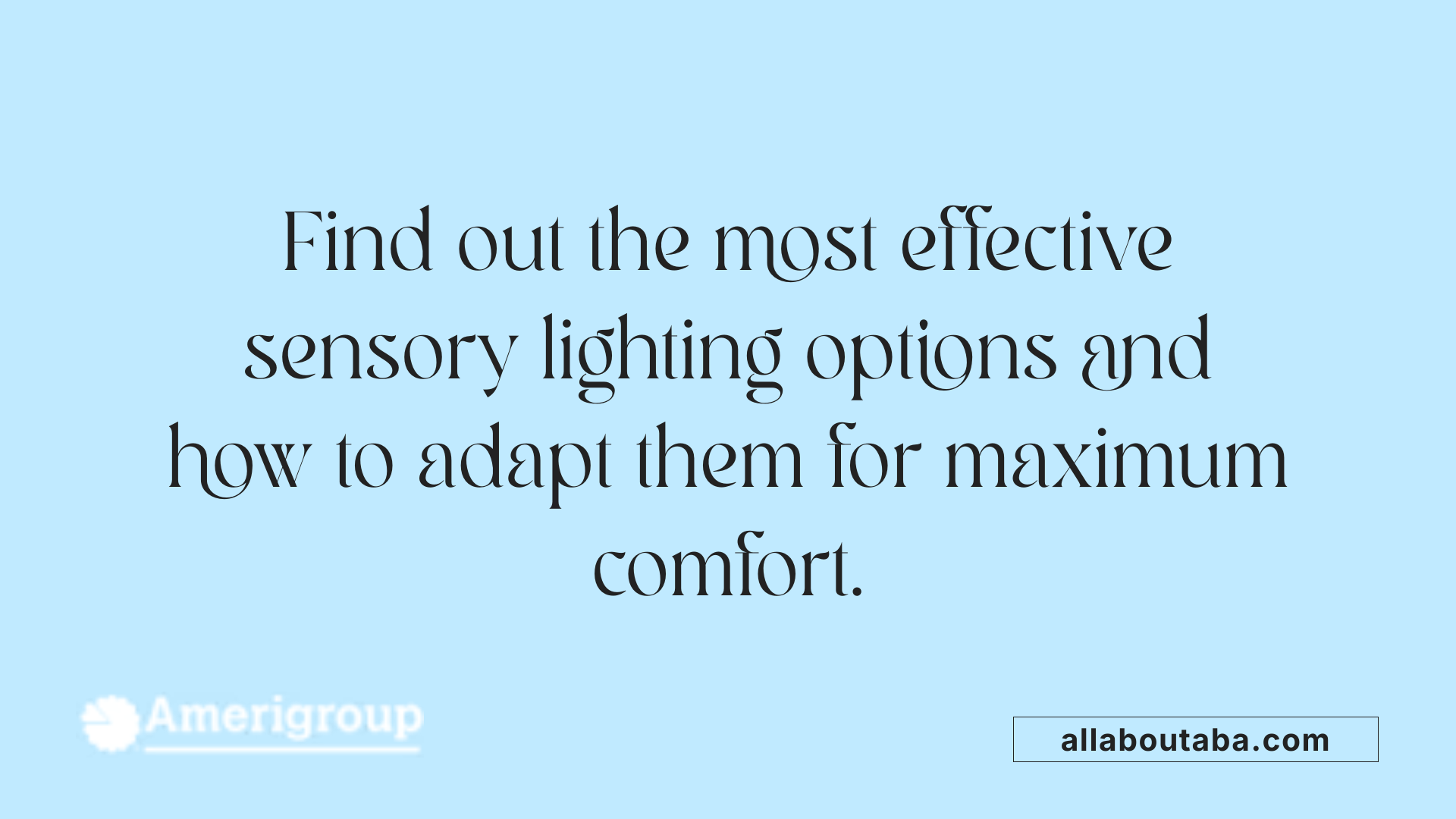
Popular Types of Sensory Lighting: Fiber Optics, Bubble Tubes, LED Strips
Sensory rooms use specialized lighting to create calming and stimulating environments tailored for individuals with sensory processing challenges, especially those with autism spectrum disorder. Among the most popular types of sensory lighting are fiber optic lights, which provide gentle, flowing light strands that can be touched and manipulated. Bubble tube lamps offer a soothing visual display with bubbles rising through colored water, promoting relaxation and focus. LED light strips add versatility by offering adjustable colors and intensities to suit individual preferences and needs.
Strategies for Lighting Customization and Adaptability
Lighting in sensory environments is often designed to be flexible and adaptable. For instance, lights can be dimmed, colors changed, and patterns altered to reduce overstimulation or enhance engagement. Using lights designed for those sensitive to brightness ensures a safe and calming space. Dynamic lighting—changing gradually or responding to movement—can promote attention and learning by connecting sensory input with cognitive engagement. Incorporating a range of lighting options allows caregivers and therapists to customize the environment to the individual's sensory profile and moment-to-moment needs.
Expert Recommendations for Home and Therapy Settings
Experts advise integrating sensory-friendly lighting carefully within both home and clinical environments. In therapy settings, calming lights like bubble tubes and fiber optics help clients relax and better engage with interventions such as ABA therapy. At home, families can establish consistent sensory zones using adjustable LED strips or reflective balls to maintain comfort and focus. Natural lighting should be maximized when possible as it positively influences mood and health, but complemented with soft, calming artificial lights in areas requiring sensory regulation or during low-light periods.
How Lighting Fits into Comprehensive Sensory Interventions
Lighting is a vital component within a holistic approach to sensory integration. Alongside tactile tools, soothing sounds, and specialized furniture, appropriate lighting assists in balancing sensory input and reducing anxiety. For example, strategically placed calming lights can prepare individuals for therapy sessions or social interactions. Adjusting lighting supports sensory regulation goals and enhances the effectiveness of behavioral programs delivered by trained professionals such as Board Certified Behavior Analysts (BCBAs) and Registered Behavior Technicians (RBTs). Implementing adaptable lighting solutions consistently contributes to comfort, focus, and overall well-being in sensory interventions.
| Lighting Type | Description | Benefits |
|---|---|---|
| Fiber Optics | Strands emitting soft, tactile light | Gentle stimulation, interactive |
| Bubble Tubes | Tubes with bubbles in colored water | Visual soothing, promotes relaxation |
| LED Light Strips | Flexible strips with adjustable colors and intensity | Customizable mood and sensory control |
| Reflective Balls | Balls that reflect light creating dynamic effects | Visual engagement without overstimulation |
| Natural Lighting | Sunlight entering the space | Improves mood, health, and cognitive focus |
Customizable and sensitive lighting is essential in creating effective sensory environments that support therapy and daily living for individuals with autism and sensory processing disorders.
Enhancing Autism Therapy Through Thoughtful Sensory Lighting
Incorporating sensory-friendly lighting into environments for individuals with autism fosters calmness, focus, and engagement—key ingredients for successful therapy and daily living. From specialized sensory rooms to carefully chosen lighting fixtures, these solutions complement therapies like ABA by supporting emotional regulation and behavioral growth. Professionals and families alike benefit from understanding and utilizing the best lighting technologies and strategies to create safe, adaptable spaces. As research and technology progress, sensory lighting will continue to evolve as a powerful tool to improve quality of life and developmental outcomes for those on the autism spectrum.
References
- Autism-Friendly Lighting: Sensory Lights for Light Sensitivity
- Applied Behavior Analysis (ABA)
- Applied Behavior Analysis (ABA)
- Applied Behavior Analysis
- ABA Techniques: Strategies for Behavior Analysts - GSEP Blog
- Applied Behavior Analysis (ABA)
- ABA Therapy Examples, Definition & Techniques
- 5 ABA Therapy Techniques to Try at Home
- What is ABA Therapy: Techniques and Dimensions
Other articles
Recent articles
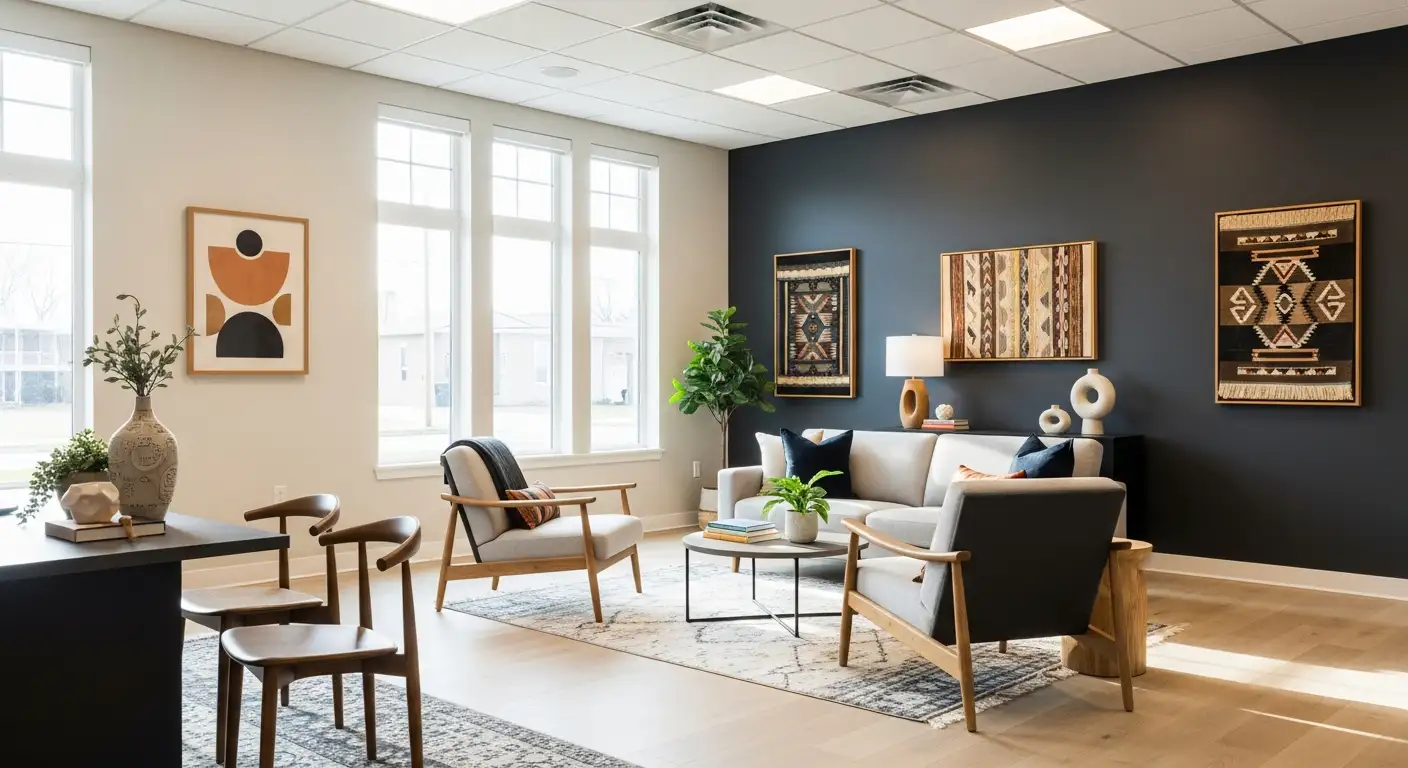
Cultural Perspectives On Autism Around The World

Autism And Creative Arts As Emotional Expression Tools
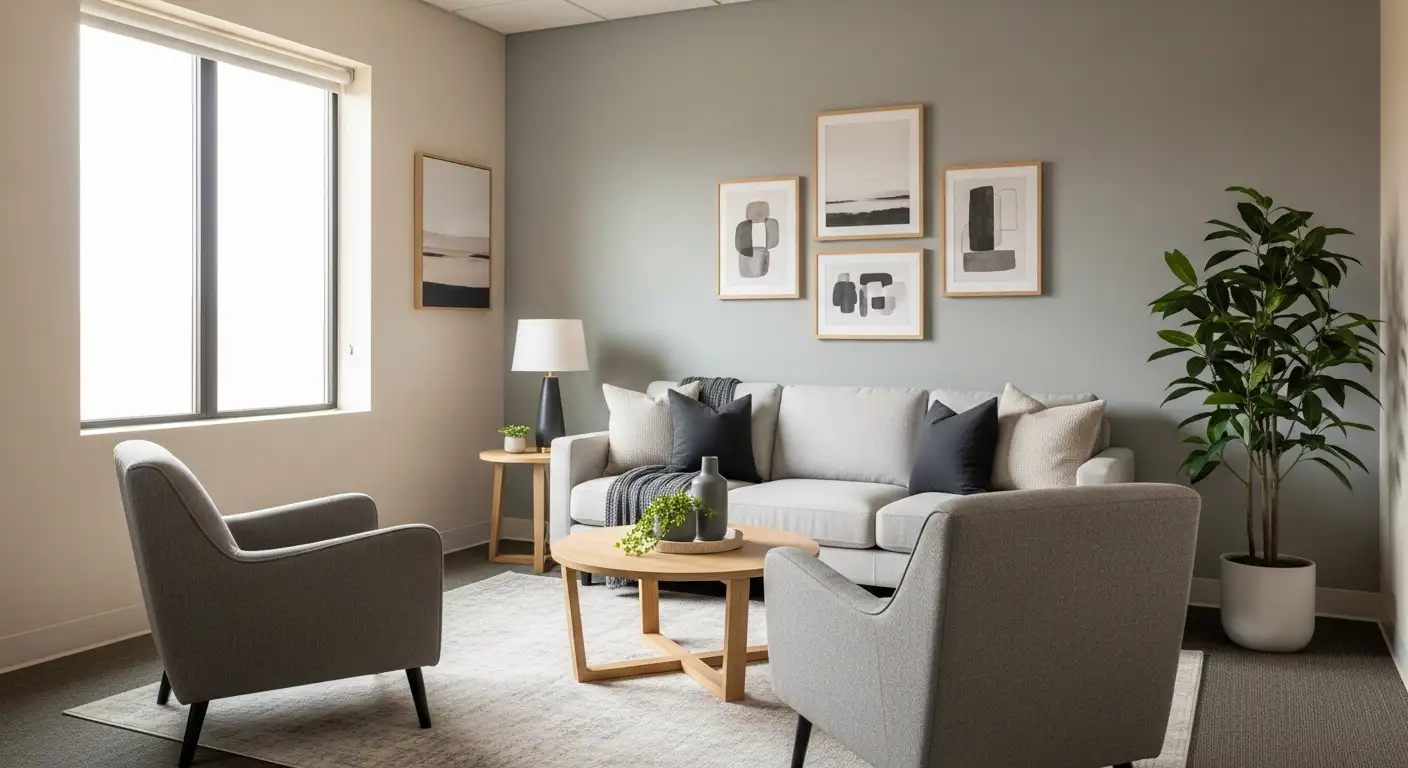
Developing Emotional Regulation Skills In Autistic Teens

Best Sensory-Friendly Lighting Solutions For Autism

Cognitive Behavioral Therapy Adaptations For Autism

Best Practices For Autism-Friendly Movie Screenings

Autism And Eating Challenges Beyond Picky Eating

Best Practices For Autism-Friendly Public Transport Design

Best Ways To Foster Collaboration Between Parents And Schools For Autism Support

Supporting Autistic Children During Transitions Between Activities

The Role Of Teachers In Fostering Autism Peer Acceptance

Using Art Therapy To Support Children With Autism

Autism And Strategies For Addressing Sensory Defensiveness

Autism And The Benefits Of Structured Leisure Activities

How To Support Autistic Students During Exam Season

Autism And Goal Setting For Personal Growth

How To Use Gamification In Autism Learning Programs

How Schools Can Reduce Bullying Of Autistic Students

Early Intervention Strategies For Autism Spectrum Disorder

The Role Of Therapists In Autism Life Skills Coaching

How To Support Autistic Individuals In Crisis Situations

Autism And Self-Care Routines For Stress Management

Understanding Echolalia And Its Role In Autism Communication

Autism And Fine Arts Education Benefits

The Impact Of Multisensory Learning On Autism Education

How Family Counseling Supports Autism Household Dynamics

Best Practices For Inclusive Playgrounds For Autism

Best Practices For Autism-Friendly Shopping Centers

How Autism Affects Fine Motor Skill Development

Best Ways To Introduce Sensory Activities Into Daily Routines

How Sports Teams Can Be Inclusive Of Autistic Players

Autism And Strategies For Building Workplace Resilience

Autism And The Impact Of Hormonal Changes During Puberty

How To Support Autistic Students In Foreign Language Classes

Best Ways To Teach Money Skills To Teens With Autism

Supporting Siblings Of Children With Autism

Autism And Co-Occurring Gastrointestinal Disorders

The Role Of Art Projects In Autism Sensory Integration

How Schools Can Incorporate Sensory Break Spaces

Best Practices For Autism Sensory Regulation At School

Autism And Strategies For Teaching Organizational Skills

Understanding The Relationship Between Autism And Anxiety Disorders

Autism And Life Planning For Long-Term Care

Exploring Visual Supports In Autism Education

Ways To Encourage Social Interaction In Children With Autism

The Connection Between Autism And Dyscalculia

The Role Of Occupational Therapy In Transition Planning For Autism

The Role Of Physical Therapists In Autism Motor Skills Support

How To Teach Decision-Making Skills To Autistic Young Adults

The Connection Between Autism And Epilepsy

Best Practices For Transitioning Autistic Children Into New Schools

Autism And Time Management Challenges In Adulthood

The Role Of Visual Arts In Autism Communication Development

How To Address Tactile Defensiveness In Autism

Best Practices For Telehealth Autism Therapy

How To Help Autistic Children Develop Friendship Skills

How Schools Can Support Autistic Students In Career Prep

Best Strategies For Autism-Friendly Event Planning

Understanding Noncontingent Reinforcement In Autism Behavior Plans

How Drama Therapy Benefits Autistic Individuals

Best Practices For Autism-Friendly Fitness And Recreation Centers

Best Ways To Promote Healthy Social Media Use For Autistic Teens

How To Help Autistic Children Cope With Public Speaking

Autism And Strategies For Managing Unexpected Changes

Best Podcasts About Autism For Parents And Educators

Autism And The Impact Of Seasonal Changes On Behavior

The Role Of Diet In Managing Co-Occurring Conditions With Autism

Sleep Challenges In Autism And Practical Solutions

Best Ways To Build Daily Routines For Autistic Children

Best Practices For Supporting Autistic Entrepreneurs

Autism And Strategies For Navigating Large Social Gatherings

Adaptive Sports And Recreational Activities For People With Autism

Autism And The Benefits Of Story-Based Learning Activities

Understanding The Role Of Play In Autism Development

Autism And The Impact Of Environmental Noise On Learning

How To Create Autism-Friendly Community Spaces

Autism And Chronic Health Conditions: What To Know

The Role Of Care Managers In Autism Life Planning

How To Teach Social Boundaries To Autistic Children

How Autistic Individuals Experience Empathy Differently

How To Support Autistic Employees In Remote Work Settings

Autism And The Relationship Between Motor Skills And Learning

How To Create Community Resource Guides For Autism Families

How To Teach Daily Living Skills To Autistic Teens

Autism And The Impact Of Mind-Body Practices On Stress Reduction

Autism And The Benefits Of Outdoor Group Activities

How To Create Autism-Friendly Sensory Paths In Schools

Best Practices For Autism-Friendly Park And Recreation Areas

Autism And Strategies For Reducing School Refusal

Supporting Autistic Individuals In Public Speaking

The Role Of Diet In Managing Autism Symptoms

The Benefits Of Gardening Clubs For Autism Social Development

How To Prepare Autistic Children For Dental Visits

Autism And Employment: Career Paths That Work

Best Practices For Autism-Friendly Hotels And Lodging

The Impact Of Screen Time On Autism Development

Autism Screening Tools For Early Childhood

The Role Of Physical Exercise In Autism Therapy

Best Strategies For Supporting Autistic College Students

The Role Of Technology In Autism Early Detection
We’re All About You, Your Family, and Your Child

